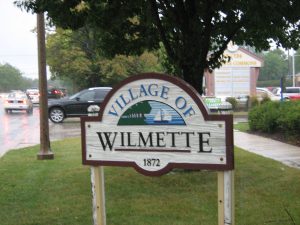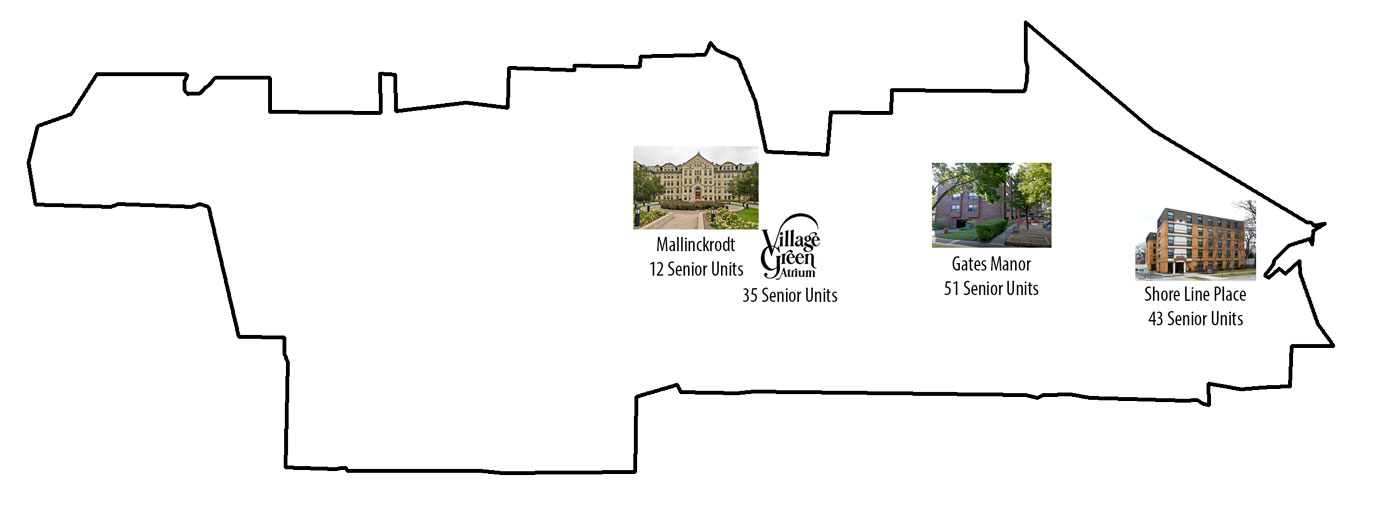Help Wilmette Reach Its Full Potential
 Wilmette is one of the gems of the North Shore—a beautiful place to grow roots, to raise a family, to reach old age. It is a place to live life to its fullest.
Wilmette is one of the gems of the North Shore—a beautiful place to grow roots, to raise a family, to reach old age. It is a place to live life to its fullest.
But Not Everyone Who Belongs in Wilmette Can Afford to Live Here!
People with lower paying jobs, with disabilities, with fixed incomes all struggle to find and keep homes that they can afford—without depleting the money they need for other basic necessities.
The Math Doesn’t Work for Some!
Rent should cost no more than 30% of one’s income. For people with higher incomes, that’s manageable. For others, it’s not.
| This many Wilmette residents… | Have incomes… | Affordable rent for them (30% of their income) would be: |
| 3,285 | Between $40,000 and $65,000 a year | $982 to $1,636 per month |
| 1,274 | Under $40,000 a year | Less than $982 per month |
But average rent for a 1-bedroom apartment in Wilmette is $2,450!
Wilmette Needs More Affordability!
With a foundation of housing they can afford, more people in Wilmette could achieve the wellbeing they need to live to the fullest. Affordability has been shown to help with all of the following:
- Health—increases in healthy eating habits, compliance with medication instructions, reduced stress, participation in exercise and preventive measures
- Employment—better concentration, improved attendance, fewer second jobs needed, increased attention to improving skills
- Child Well-Being—more time for parent/child interactions, higher quality parent/child interactions (because of reduced stress), fewer cognitive delays and behavioral issues, decrease in tardies and absences, fewer illnesses
Out of Wilmette’s 9,742 households, only 141 units are designated as affordable housing and are almost exclusively for seniors.
Why We Need Affordable and Accessible Housing
As of our most recent census, over 40% of our neighbors were age 60 or above, 2,613 were living with a disability, and 649 were living in poverty.Also census data, one third of Wilmette homeowners and renters were shelter burdened—spending too large a portion of their income on housing.Since 1990, our rental stock has fallen by 17% with 225 units lost.Divorce, unemployment, death of a spouse, retirement, illness, and disabilities are key factors contributing to housing stress.“Aging in place” is recognized nationally as healthy for families and communitiesAfter graduating from high school, our children living with disabilities must learn to live independently. Yet, many cannot afford to live in the community they know, where they can be close to friends and family and have access to familiar amenities.Peer-reviewed studies from the National Housing Institute demonstrate that affordable housing maintains property values. Wilmette has four buildings for low and mixed-income seniors, and our property values remain high.
What are the Problems?
Housing Prices are Rising
- The average sales price of a home in Wilmette as of June 30, 2011 was $771,101 a84% increase since 1994 although a decrease of 2.37% over the previous year. (Chicago, October 2011).
- The median rent in Wilmette was $1,038 in 2000. In order to afford this rent, a household would have to earn at least $19.96 per hour, or $41,520 per year. This calculation assumes the household will spend no more than 30% of their income on rent (the generally accepted standard of affordability). Earning minimum wage ($6.50), a person would have to work 123 hours per week to have an income high enough to afford this rent.
- Between 2000 and 2010, Wilmette’s population decreased 2.04% to 27,087, and the number of households decreased 2.95% (from 10,039 to 9,742).
- In the 2000s, Wilmette has lost 230 owner occupied housing units and 67 rental units in the 2000s. 1% of the total occupied stock is ownership housing.
- The number of housing units with zero or one bedroom grew 30% since 1990.
Seniors are vulnerable
- Households with individuals aged 65 and over grew from one in four in 1990 (2,593 households) to one in three (3,171 households) in 2010, a 25% increase.
- The population aged 75 and older grew from 1,857 in 1990 to 2,294 in 2000, or5%.
- 209 seniors aged 65 and over live in poverty, a 24.4% increase since 1990.
- 730 senior householders, or 25% of Wilmette’s senior-headed households, earn less than $35,000 per year.
- 7% (367) of occupied rental units house persons aged 65 and over.
- 802 senior homeowner households (354 aged 65 to 74 and 109 aged 75 and over) live alone, representing 56% of all 1-person homeowner households.
- 1186 senior renter households live alone, 6% of all 1-person renter households.
- 7% of all senior householders living alone are women.
- 225 senior homeowner and 196 senior renter households paid more than 35% of their incomes in shelter costs in 1999 (considered by HUD to be “burdened”).
Low-income families with children are at risk
- The number of households with individuals aged 18 and under grew 13.6% (495) since 1990, from 37.5% (3,640 households) to 41.2% (4,135 households) in 2000.
- 137 children under age 18 live below the poverty level, a 44% increase since 1989.
- 332 households with children are led by single women, or 3.3% of all Wilmette households. This declined slightly from 345 in 1990. (continued)
- 14 single mothers with children were living below the poverty level in 1999. (No single father lived below poverty).
Persons with disabilities
- 2,613 Wilmette residents aged 5 and over (10%) have a disability.
- 6% of adults with disabilities (aged 21 to 64) are currently employed.
Housing costs burden low-income residents
- 623 Wilmette residents of all ages live below the poverty level. This represents 2.3% of the area’s total population, or an 11% increase since 1989.
- 6% of Wilmette households earn less than $35,000 per year and 21.3% earn less than $50,000.
- 7% of Wilmette homeowners (1,370) and 30.4% of Wilmette renters (398) spend more than 35% of their incomes on shelter. 262 of the 398 renters pay more than 50% of the income on housing.
Diversity is rising
- Asians comprise 8.9% (2,473) of the population. This is a 34% increase since 1990 when 6.9% (1,840) of the population was Asian.
- Latinos comprise 2.1% (574), up 28% from 1990 when 0.6% (449) were Latino.
- African-Americans comprise 0.7% (191), an increase of 47% since 1990.
Employment
- As of 2004 Wilmette had 5,841 unemployment insurance covered jobs, an increase of 18% since 1979 (Illinois Department of Employment Security).
- The 2005 median income for all 329 School District 39 employees, the largest employer, is $50,654.
Affordable housing options
- 1,377 households (14%) earn between $35,000 and $60,000 per year, the target incomes under the Affordable Housing Planning and Appeal Act. 5% of housing units (554) are deemed to be affordable by the Illinois Housing Development Authority, using the 2000 Census. (www.ihda.org/admin/Upload/Files/8e3d4770-6932-4503-a3ad-665a0c32edcb.pdf)
- There are 262 deliberately affordable or subsidized rental and condominium units for low-income seniors located within four buildings.
- There is no subsidized housing for families in Wilmette.
- As of March 2005, there were 10 Housing Choice/Section 8 Voucher renter families residing in Wilmette. This is an increase of 500% since February 1998 when only 2 families utilized the voucher. (Cook County Housing Authority)
- Wilmette offers a Housing Assistance Program to senior and disabled residents to help with the costs of rent, mortgages, and property taxes in the annual sum of $2,400. (wilmette.com/comdev/housing.htm)
- Wilmette offers low- and moderate-income residents no-interest loans to update housing code violations on single family homes, townhomes, and 2, 3, and 4-flat buildings. (wilmette.com/comdev/housing.htm )
- Wilmette has an affordable housing plan that involves a voluntary affordable housing set-aside in new multifamily development.
More Resources
Wilmette Policies
Studies
Local Organizations
In the News


